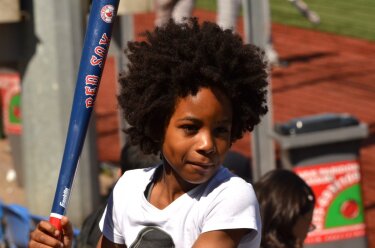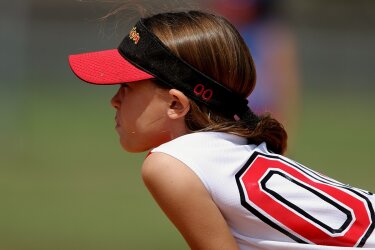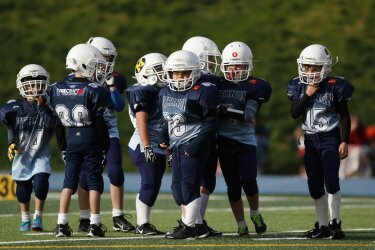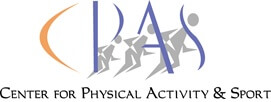
Sport Psychology in Action: 4-Part Article Series Connecting Research to Practice
Youth sport tends to focus on training to enhance athletic performance. However, the most harmful performance stressors aren’t necessarily based on physical abilities, but rather surround an athlete’s mindset. With their brains and self-awareness still developing, young athletes can find the sporting environment extremely stressful. Young athletes particularly have a fear of embarrassment or making mistakes which negatively influences decision making, tactical awareness, and perceived ability to successfully perform tasks (decreased self-efficacy). With the right tasks, a coach can influence an athlete’s anxiety levels, enjoyment in sport, and overall sport confidence (Duda & Balaguer, 2007). Therefore, the coach plays an essential role in promoting a positive climate that nurtures progress and in which confidence and self-esteem are positively impacted.
Self-confidence is an athlete’s belief in their ability (Bénabou & Tirole, 2002) and refers to how your athletes expect to perform and achieve their goals (Lenney, 1977). It is considered one of the most influential predictors of behavior in people’s everyday lives (Bandura, 1986). Hays, Thomas, Maynard & Bawden, (2009) suggest self-confidence is essential for athletes to perform successfully in sports because of its positive effects on thoughts, feelings, and behaviors. On the other hand, a lack of confidence has been associated with anxiety, depression, and feelings of dissatisfaction (Vealey, 1986), all things that can actively harm an athlete’s performance.

Importance of Self-Confidence
Self-confidence can impact a number of things in the sport environment including how an athlete interprets their pre-competition nerves. For example, if a golfer has common nerves before their round, high levels of self-confidence can influence the interpretation of specific holes on the course in a positive way. Positive thinking enables the mind to operate with clarity and purpose, removing negative pre-competition emotions that are so common in young athletes (Hanton, Mellalieu, & Hall, 2004). Through high levels of confidence, younger athletes can stay positive, motivated, focused, and emotionally connected to the sport even when they are not performing well. Below is a list of essential techniques coaches can use to increase self-confidence levels in their athletes.

Strategies for coaches to enhance sports confidence in Youth Athletes
- Have athletes focus on their own performance. Athletes can judge their competence in one of two ways, via mastery (comparing themselves to past performance) or by an ego-orientation (comparing themselves to others). Elliot and Dweck (2005) illustrate how prolific the research is on achievement goal orientation toward motivation, and highlight the advantages of adopting a mastery goal orientation for learning skills. Within a mastery-orientated environment, there is no pressure to outperform others as the primary focus is on self-improvement. This focus on one’s self has shown to result in greater athlete self-esteem and enjoyment in sport. To create such an environment, coaches should set goals and targets for both practice and competition and focus these goals individually for each athlete so they can track their own progress.
- Break down complex steps. Reiken (1985) suggests that a simple way to enhance an athlete’s confidence is to develop tasks that increase in difficulty and build towards each milestone. Developing fundamentals through initial tasks where athletes can experience bite-sized success is a perfect way to promote consistent development. Such an environment will avoid overloading youngsters with information and ensure an easier progression in skills (Irwin, Hanton & Kerwin, 2005). For example, if you’re teaching someone how to hit a baseball for the first time, don’t start by pitching a rocket. Instead, start gently so the athlete can develop hand-eye coordination, succeed in the task, and develop their confidence as they progress in the drill.
- Help athletes focus on the things they can control. Youth athletes often feel as though they don’t have control in high-pressure sporting situations. It is therefore important to focus on the things they can control and eliminate worry surrounding the things they cannot control (Caine, Walch & Sabato, 2016). Instead of dwelling or obsessing over the uncontrollable factors in sports, such as how good the opposition is, crowd noise, and weather; it’s essential that athletes pay attention to aspects that can be controlled such as warm-up routines or pre-game tactics. Remember “You can’t direct the wind, but you can adjust the sails”.
Remember, many things impact performance, but confidence is one aspect that can help an athlete succeed and one that can be influenced by your own coaching practices. Coaches who look for opportunities to build confidence in practice and competition will help their athletes progress, feel better about themselves, and increase their ability to perform consistently.
References
Bandura, A. (1986). Social foundations of thought and action: A social cognitive theory. Englewood Cliffs, NJ: Prentice-Hall.
Benabou, R., & Tirole, J. (2002). Self-confidence and personal motivation. The Quarterly Journal of Economics, 117(3), 871-915.
Caine, D., Walch, T., & Sabato, T. (2016). The elite young athlete: Strategies to ensure physical and emotional health. Open Access Journal Of Sports Medicine, 7, 99-113.
Duda, J.L., & Balaguer, I. (2007). The coach-created motivational climate. In S. Jowett & D. Lavalee (Eds.), Social psychology of sport (pp. 117–130). Champaign, IL: Human Kinetics.
Elliot, A. J., & Dweck, C. S. (2005). Competence and motivation: Competence as the core of achievement motivation. In A. J. Elliot & C. S. Dweck (Eds.), Handbook of competence and motivation (p. 3–12). Guilford Publications.
Hanton, S., Mellalieu, S., & Hall, R. (2004). Self-confidence and anxiety interpretation: A qualitative investigation. Psychology of Sport and Exercise, 5(4), 477-495.
Irwin, G., Hanton, S., & Kerwin, D. (2005). The conceptual process of skill progression development in artistic gymnastics. Journal of Sports Sciences, 23(10), 1089-1099.
Hays, K., Thomas, O., Maynard, I., & Bawden, M. (2009). The role of confidence in world-class sport performance. Journal of Sports Sciences, 27(11), 1185-1199.
Lenney, E. (1977). Women’s self-confidence in achievement settings. Psychological Bulletin, 84(1), 1-13.
Reiken, G. (1985). Women’s gymnastics: Teaching and learning progressions. Journal of Physical Education, Recreation and Dance, 4, 33–48.



